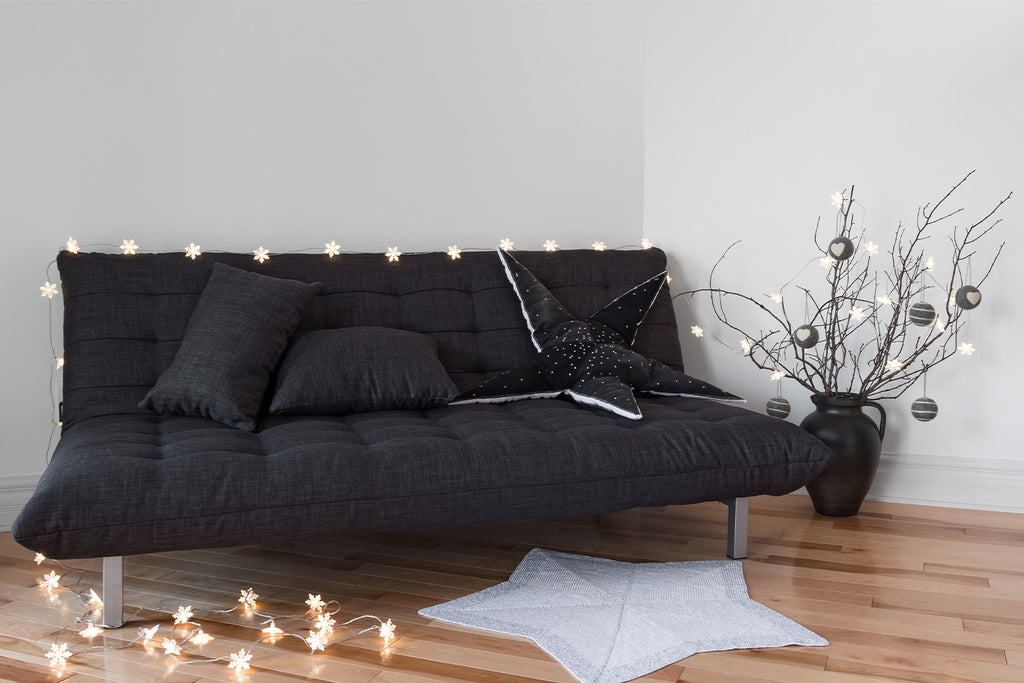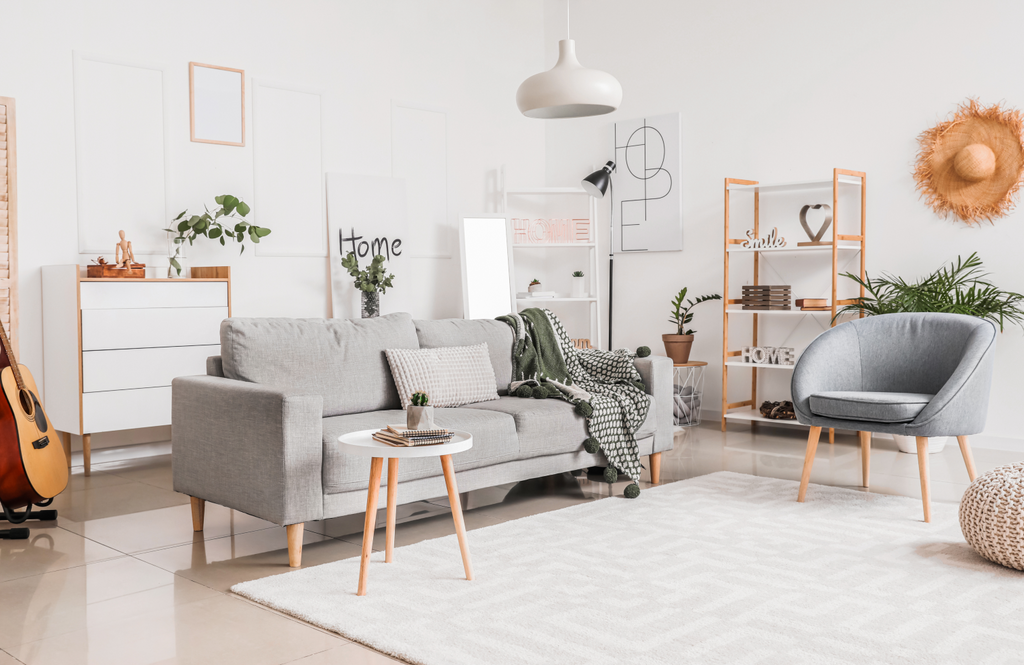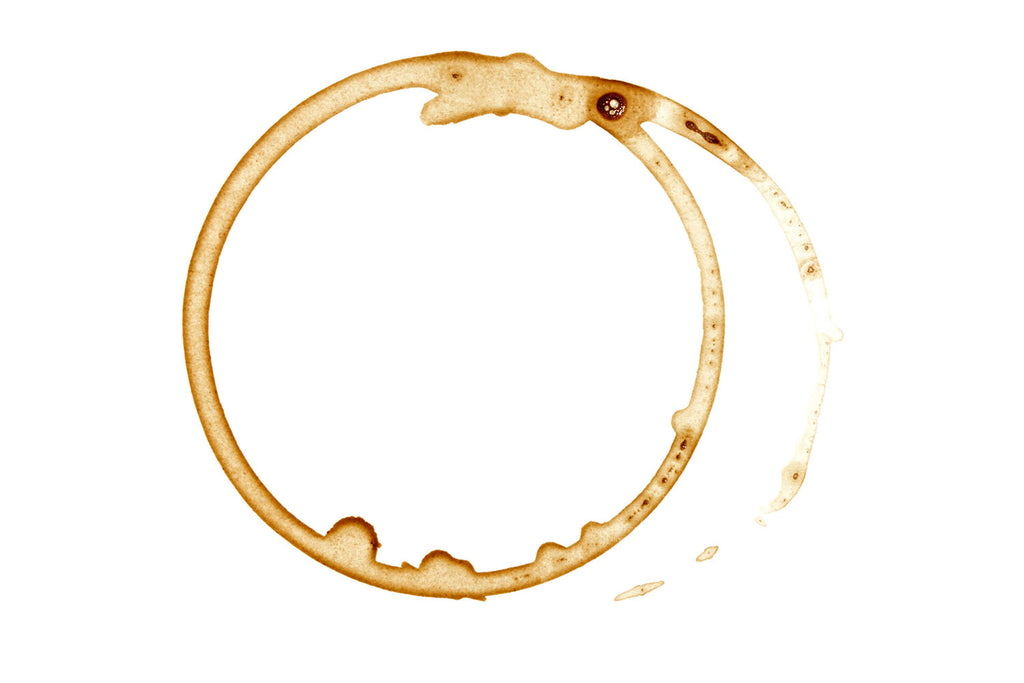
What Is a Futon?

Have you ever heard of a futon bed? Even if you have, you might only know one piece of a much larger story. The futon is an incredibly historical bed, but its definition has changed over the years — which means that many people have some confusion over what a futon actually is!
Today, we’re here to clear up any confusion about futons and answer some FAQs. This fantastic piece of furniture could have a place in your home, so it’s a great thing to learn about.
Welcome to the wonderful world of futons!
Where Did the Futon Come From?
The futon is a convertible sofa bed that has been around for centuries. Interestingly enough, its original was nothing like the futon beds we know in the U.S. today. Its origins take us back to ancient Japan.
In its traditional sense, the futon (the Japanese word 布団) is a takeaway bed. It is a small, pliable foam mattress that can be easily put away to make space in the room for other activities. Most of the time, futons rest on top of a tatami mat, a type of soft but durable flooring in Japan.
These mats are typically paired with a duvet cover for easy cleaning and stowed in a guest room or closet. By making every aspect of the bed portable and simple, you can completely put away your sleeping arrangements to make your room more spacious and multifunctional. Futons are a perfect addition to any small apartment that can’t fit a regular bed, especially if you have overnight guests coming to visit you fairly often. They are small enough to easily stow away in storage and comfortable enough for any guest joining you for a certain period of time.
The History of Japanese Sleeping
Mats have been the primary method of sleeping in Japan for millennia. Peasants and nobles alike slept on mats on the ground. Nobles had higher-quality mats — but mats nonetheless. This may seem strange to many Westerners who have slept on large beds their whole lives, but it’s true.
While all people slept on mats in Japan, this was not the case in the West, where beds were a status symbol. In the West, peasants typically slept on the ground or on mats, while elevated beds were reserved for noblemen, royalty, and the elites.
In ancient Japan, these mats were primarily made of straw, reed, or rush. In the 8th century, we saw the introduction of a new style of mat reserved for the elites: tatami mats. Tatami mats are soft mats that were invented to be bedding for the nobles in Japan.
These tatami mats were very carefully crafted to be both durable and comfortable. The inside was made with rice straw, and the outside covering was made with woven rush grass. The soft exterior was still somewhat firm, and the inside provided a give that made it slightly plush and comfortable for sitting or lying down.
Nobles slept on the tatami, while the peasants slept on straw mats. By the 16th century, the Japanese started using tatami mats as flooring for all. These mats measure about 1.76 meters by 0.88 meters, and the mat itself is used as a unit of measurement for measuring rooms.
An Evolution In Mat Sleeping: The Futon
The traditional futon wasn’t invented in Japan for centuries after the invention of the tatami in the 17th century. They were made by stuffing fabric with either cotton or wool, but cotton was a rare commodity in Japan — meaning futons were hard to come by.
By the 18th century, futon production began in Japan. More cotton was becoming available, so more people started to sleep on them. Still, they were only used by nobles at this point because they were so expensive.
In the 1900s, Japan was importing more and more raw cotton and had factories to process it thanks to the Industrial Revolution. So, futons were produced widely and used by pretty much everybody.
Throughout this time, and even today, futons are placed on top of tatami mats for sleeping. A standard Japanese futon is a cotton fabric mattress that is filled with plush cotton. It’s a thin mattress, only about three or four inches thick. They’re comfortable, and the flat, sturdy sleeping surface provides great support for your back.
Cotton and Futons
Also, since the traditional futon is made from cotton, they make for smart sleeping arrangements for those of you that live in a warmer climate. Cotton is a popular material, often seen in luxury, high-thread-count sheets.
Cotton has cooling properties that help with airflow and circulation, keeping you cooler all night long. Futons are also not incredibly thick, making them even better for warm sleepers. Even if you are a cold sleeper, plenty of elements, such as extra blankets, can be added to the futon to make the sleeping experience ideal for your needs.
But the main benefit of the mattress remains the same. The ability to roll up your mattress and store it away is incredibly useful and allows you to make so much more out of a small space.
The Western-Style Futon
Futons went largely unnoticed by the West for centuries following their invention. But that all changed during World War II. U.S. soldiers were stationed in Japan, where they were exposed to the new style of bedding. They returned from Japan, many of them talking about the exotic floor mattresses and how they made their backs feel better than their traditional beds at home.
Furniture companies hopped on the trend quickly and started making Americanized versions of this Japanese mattress. Because most Americans weren’t too excited about the idea of sleeping on the floor, they made an alternative option: the futon bed frame.
Futon sofa bed frames are low, minimalistbed frames. They are platform beds, meaning they use slatted wood or a solid platform to support the mattress. This was a big change from the large bed frames, box springs, and thick mattresses Americans were used to. They were much smaller than standard mattresses and lower to the ground.
These futons, like the Cream Faux Shearling Futon, are still very popular to this day and make a wonderful addition to any apartment or house, big or small. They are well-suited for people trying to maximize their space in a room, seeing as how the American futon doubles as a daybed.
In addition, many people tend to enjoy a softer, plushier mattress than futons could offer. So American futon mattresses were made to be six to twelve inches thick rather than three or four.
As the story goes on, bed frames become more and more popular. During the ‘50s and ‘60s, with the rise of minimalism and styles like mid-century modern, low-profile beds like the futon frame and platform beds became more and more popular, and they still are today.
How Did We Get the Full-Size Futon Couch?
But today, when we think of a futon, we don’t think of any of those things. In all likelihood, you hear the word futon and think of a couch where the back can fold down to form a makeshift bed. So, how did we get here?
This development didn’t happen until the 1980s. At this time, the tri-fold futon was invented. It was primarily used as a bed frame, but it had a unique tri-fold structure that could fold up into a chair to comfortably sit in throughout the day.
By the 2000s, this idea developed even further into what we know today as the futon couch. Today, the futon serves primarily as a couch, but it can also be used as a bed.
How Are Futons Used Today?
The answer to this question depends on where you are in the world.
The Japanese Way
In Japan, millions of people still use the futon as the bed mattress in their sleeping space night after night. It’s an incredibly popular form of sleep that is steeped in tradition. It is believed that futons align your body, back, and joints, so it is still the primary sleeping setup for the Japanese person.
They are a much easier, and arguably more comfortable, choice for any guests that are staying at your house as opposed to setting up other sleeping methods, such as an air mattress or trying to make a couch as comfortable as possible.
At the end of the day, the futon is somewhat of a cultural legacy. It’s the way that the Japanese have slept for thousands of years, so they continue to do so.
The American Way
But in America, our futons are used as makeshift beds with couch-style upholstery and armrests. Perhaps we have a foldable futon that can be used as a guest bed in a pinch. Futons that fold out into different mattress sizes are also incredibly popular in college dorms, where they’re used for lounging and sleeping alike. If you throw a comfortable mattress pad on the top, you can have a nice bed that can be enjoyed by anybody.
Although we have made significant adaptations to the original futon, it’s still an important tool in our interior design. The heart of the futon is still there. It provides a place to sleep that can also be used for other things during the day, meaning it’s multifunctional and efficient.
On top of that, futons have made a dramatic impact on the other beds that we sleep on. Futons coincided with the rise in minimalistic mid-century modern design. And all of those styles are still relevant and used today in the 21st century. We owe a lot to the Japanese and futons’ unique, functional design.
You can even take it one step further and say that the futon is the inspiration for the modern mattress pad. So many people benefit from comfortable mattress pads today, but they might not realize how many of them are inspired by the futon.
Where To Put a Futon
You may be wondering if a futon would be ideal for the current space that you are in. They are great for those of you with limited space, but this really depends on the type of futon that you own.
Here are some of the places where futons will look and function at their best:
American Futon - Small Living Room
An American futon would be great in a smaller living room since they typically take up less space and double as beds. They are usually easily moveable, so if you ever want to rearrange the pieces in your living room, this futon shouldn’t give you any sort of hassle.
American Futon - Bedroom
Depending on the type of room you are staying in, an American futon may work perfectly in your space. Have a TV at the opposite end of the room? Fold the futon up during the day, and open it to its mattress form at night as a bed. Depending on the futon you get, it could cost less than purchasing a mattress.
American Futon- Studio Apartment
Futons, especially the American version, would work perfectly for any of you that are living in a smaller city apartment or anyone that is living in a studio with limited space. Studios typically don’t have room for large, statement furniture, so a bed and couch condensed into one will save you a ton of space and trouble.
Traditional Japanese Futon - Anywhere!
These types of futons are small enough that they can work in any room in your home. For example, besides the obvious answer being the bedroom, Japanese-style futons shine as extra lounging real estate. Store some of these futons in your furnished basement for kids’ sleepovers or in a living room when not all guests can fit on the couch. Basically, it’s anywhere you need extra sleeping or lounging situations in your house.
The Futon
A futon bed is an incredible piece of furniture. Whether you use it in the traditional Japanese sense or go for the modern Americanized version, you’re going with an amazing product that will help you get the incredible night of sleep you deserve.
And now you know everything you need to know about the futon. For more helpful info on interior design and for an amazing selection of modern furniture, check out eLuxury.
Sources:
Tatami | University of Pittsburg




